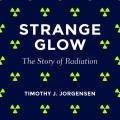Georgetown Radiation Expert, Author Reflects on Fifth Anniversary of Fukushima Meltdown

Posted in News Release
WASHINGTON (Feb. 22, 2016) — Five years ago on March 12, Fukushima Prefecture in Japan experienced the largest nuclear accident and release of radioactive materials since the events of Chernobyl in the Ukraine 30 years earlier. But Fukushima was no Chernobyl.
The meltdown at the Fukushima Daiichi Nuclear Power Plant occurred because of a series of equipment failures, triggered by a magnitude 9.0 earthquake and subsequent tsunami that flooded the facility on March 11, 2011.
Radioactive materials released by the plant contaminated the region, forcing a mass evacuation of the people who lived near the plant. Within days, radioactive water used to cool the facility was dumped into the Pacific Ocean. Almost immediately, fears of radiation sickness and cancer inundated the news in Japan, the U.S. and around the world.
“The reality is that the risk of death from radiation sickness during a nuclear core accident is borne almost exclusively by people on the reactor grounds, most notably by the workers servicing the core,” says Georgetown University Medical Center radiation expert Timothy J. Jorgensen, PhD, MPH. He discusses the radiation exposure of nuclear meltdowns in his new book, “Strange Glow: The Story of Radiation” (Princeton University Press). Jorgensen is also a member of Georgetown Lombardi Comprehensive Cancer Center.

Only two plant workers died in the Fukushima accident — they drowned in a reactor basement when it flooded — and there were no cases of radiation sickness among the plant workers, because their radiation doses were too low to produce sickness. At Chernobyl, 54 workers died from radiation sickness. The causes of death among the 15,900 Fukushima residents who died in the aftermath included drowning, heart attacks and other illnesses; exposure to cold temperatures; and transportation accidents. None were attributable to radiation sickness.
What about the risks of future cancers caused by exposure to the radioactivity released from the reactors? The possibility of thyroid cancers and other cancers developing exists, but Jorgensen thinks a measurable increase in clinical cancer rates is unlikely because the public was exposed to very low amounts of radiation.
“We have a lot of collective experience with the health consequences of human radiation exposure from the atomic bombs in Hiroshima and Nagasaki, the Marshall Island nuclear bomb testing, Chernobyl and medical radiation procedures,” notes Jorgensen. “The findings from those studies suggest that the cancers caused by Fukushima radioactivity, if any, will be few.”
The radiation levels in the Fukushima Prefecture have not returned to the normal background levels that existed before the accident, and probably won’t. But as Jorgensen explains, radiation levels, measured in units call millisieverts (mSv), will still be fairly low.
“The Japanese government has set a goal of 20 mSv per year as the maximum dose that any returning resident should receive, with most receiving far less than that. This level is comparable to doses received by some medical radiographic procedures,” Jorgensen says.
For example, 20 mSv per year is the same dose as an annual spiral whole-body CT scan, which has a cancer risk of about one in 1,000. “Some people would consider such a risk level safe, while others may not; we all have different risk tolerances,” Jorgensen says.
“It isn’t necessary that everyone come to the same conclusion about safety, but it’s essential that everyone be told of their risk in an intelligible way so they can make their own decisions about personal safety,” Jorgensen explains.
It is that understanding that prompted Jorgensen to write Strange Glow: The Story of Radiation, which will be published March 9. After being interviewed by dozens of news outlets during the Fukushima meltdown, he realized most people do not understand radiation in a way that allows them to make an accurate assessment of its health risks.
“I realized how uninformed many people were about the radiation exposures they live with every day, often fearing the benign things and oblivious to the more threatening hazards,” Jorgensen laments. He notes that while the risk of radiation from different sources is well understood in the scientific community — “we have been studying this topic for 100 years” — little headway has been made in communicating these findings to the public in understandable terms.
VIDEO: Listen to Tim Jorgensen describe exactly what happened at the Fukushima Dai-ichi Nuclear Power Plant five years ago.
About Georgetown University Medical Center
Georgetown University Medical Center (GUMC) is an internationally recognized academic medical center with a three-part mission of research, teaching and patient care (through MedStar Health). GUMC’s mission is carried out with a strong emphasis on public service and a dedication to the Catholic, Jesuit principle of cura personalis — or “care of the whole person.” The Medical Center includes the School of Medicine and the School of Nursing & Health Studies, both nationally ranked; Georgetown Lombardi Comprehensive Cancer Center, designated as a comprehensive cancer center by the National Cancer Institute; and the Biomedical Graduate Research Organization, which accounts for the majority of externally funded research at GUMC including a Clinical and Translational Science Award (UL1TR001409-01) from the National Institutes of Health.
###
